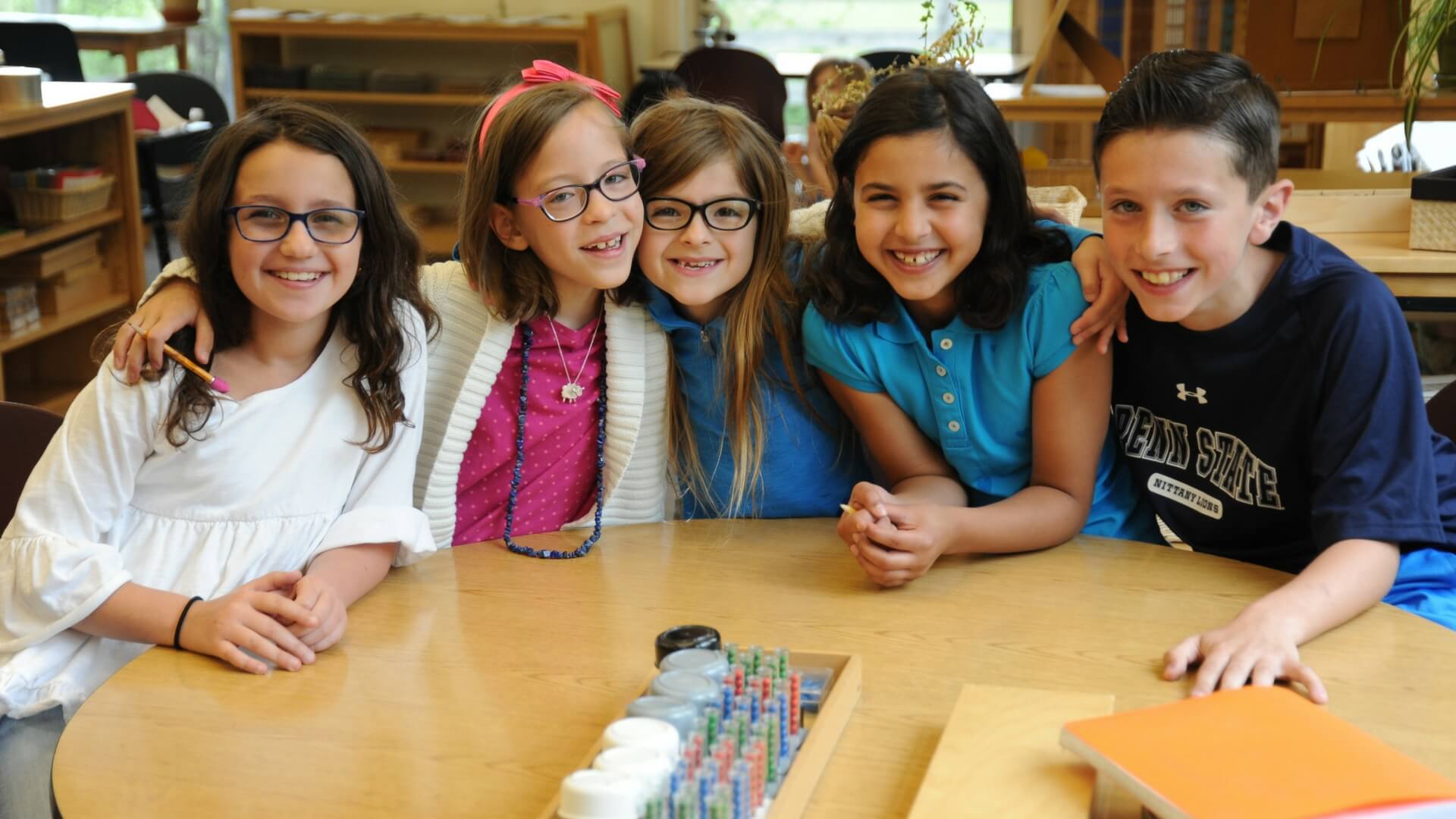You may have noticed the beautiful Math materials in Montessori early childhood and elementary classrooms. Enticing and elegant, a few minutes of exploration with these materials often help even experienced adults to better understand the relationships and principles of Mathematics. Montessori knew, though, that the appeal of mathematical thinking was evident in infancy and one of the core, universal tendencies of human development.
So what does Math look like in a Montessori Infant-Toddler community? Like other concepts, it’s present in developmentally appropriate ways, although they may not always look, “math-y.” For example, we know that children learn through movement and exploration in these communities. It’s critical, then, that the physical environment provide realistic, predictable feedback as children move through it, reinforcing their spatial awareness. Objects with which the children interact need to respond the same way to each interaction, reinforcing the lessons that children learn as they explore. Notice, then, that Montessori Infant-Toddler classrooms rarely have battery-driven toys available. Because we want children to build their capacity for prediction and their ability to sort and classify real information, there aren’t responses (like noises or movements) that aren’t driven by the child’s own actions. By interacting in a predictable environment and building their understanding of cause and effect, children’s mathematical minds develop. You won’t see bouncy chairs with internal motors or flashing lights on battery-powered buttons. Instead, you’ll see children exploring how different shapes and objects fit together, how they roll or land or weigh, how materials fill space, how liquids fill differently than solids, and the like.
The language rich nature of these classrooms also supports children’s developing mathematical ability, as teachers use accurate vocabulary to narrate children’s experiences. “You have a smaller cylinder and a larger cylinder,” you may hear, or “Let’s collect the cubes together.” Children build the vocabulary to describe dimension, for comparison and for the basis of geometric shapes. You’ll hear comparative language like, “more,” “less,” “bigger,” “smaller,” “heavier,” “lighter,” etc. as children move through their spaces and engage in language-based games with their teachers. Finally, you’ll notice children beginning to understand sequences, including the signals for those sequences, like how a teacher setting a placemat on the table suggests that it’s time to make one’s way to a chair for a snack, or how to put the lids on their containers before they put them back inside their lunch boxes.
These may seem like small successes, but for the growing mind, they are foundational to later development. There are endless mathematically-informed qualities you have already adopted but probably think about rarely, like how much weight to place on a step as you’re walking up and down a staircase. But just like you know how it feels to step up on a stair that’s not there, or to expect one more step down when you slam your foot into the landing, understanding them helps you to navigate through your environment with ease. It’s in these infant and toddler experiences that those core understandings are constructed, in preparation for the application in traditional mathematics activities children will master in later years.


